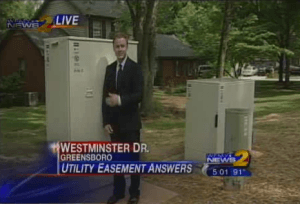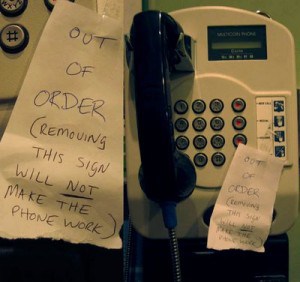 Thanks to a divided 5-4 decision by the U.S. Supreme Court, customers trying to seek relief from unilateral fees and surcharges suddenly showing up on their Verizon cell phone bills will have to pursue individual arbitration claims with the cell phone company instead of joining forces in a class arbitration claim.
Thanks to a divided 5-4 decision by the U.S. Supreme Court, customers trying to seek relief from unilateral fees and surcharges suddenly showing up on their Verizon cell phone bills will have to pursue individual arbitration claims with the cell phone company instead of joining forces in a class arbitration claim.
That Supreme Court case, AT&T Mobility v. Concepcion, is turning out to benefit Verizon Wireless as much as AT&T, because the Supreme Court found merit in contracts obligating customers to seek individual arbitration to settle differences while forbidding customers from pursuing organized legal action.
Now the 3rd U.S. Circuit Court of Appeals in Philadelphia has reversed an earlier ruling, reinstating a 2008 decision by U.S. District Judge Freda Wolfson that delivered victory to Verizon Wireless.
At issue was Verizon’s decision in October 2005 to unilaterally impose an “administrative fee” of $0.40 and/or $0.70, as part of the monthly charges for each Verizon cell phone line. Customers upset with the new fees felt they violated the principle that, as part of their two year contracts, Verizon would deliver a fixed-price service. The cell phone company has since implemented a variety of fees and surcharges on customers that are pocketed by Verizon, regardless of the contract price.
All Verizon Wireless customers are obligated by contract to challenge any terms and conditions they disagree with through an arbitrator of Verizon’s choosing, at a place also chosen by the company. That means Verizon could place an arbitrator on retention in a city potentially thousands of miles away, and demand the customer make their case there, to an arbitrator whose livelihood ultimately depends on retainer fees paid by the company. Few consumers would make such a journey to protest a fee that amounts to less than $10 a year per line.
Lawyers Keith Litman and Robert Wachtel, representing Verizon customers, decided to try a different approach — a class action arbitration. The two attorneys would represent potentially millions of impacted customers themselves, making any travel cost concerns incidental, and providing a seasoned challenge before arbitrators, who would also hear counter-arguments from Verizon’s own legal team.
 Verizon’s attorneys argued such class action arbitration was specifically forbidden in the company’s contract with customers. Normally, a judge might decide at that point a customer agreeing to those terms and conditions was effectively up the creek. But a series of legal challenges in circuit courts opened the door to invalidating those terms.
Verizon’s attorneys argued such class action arbitration was specifically forbidden in the company’s contract with customers. Normally, a judge might decide at that point a customer agreeing to those terms and conditions was effectively up the creek. But a series of legal challenges in circuit courts opened the door to invalidating those terms.
Litman and Wachtel argued that because the New Jersey Supreme Court, in Muhammad v. County Bank of Rehoboth Beach, Del. (2006), has held that an arbitration provision in a consumer contract that precludes class arbitration of low-value claims is unconscionable under New Jersey law, similarly, the arbitration provision in Verizon’s contract is also unenforceable.
Unfortunately for the two attorneys representing consumers, the decision by the U.S. Supreme Court effectively overrode that case, leaving Verizon on top with Judge Wolfson’s 2008 decision.
Wolfson’s written ruling on the case seemed unimpressed with claims that Verizon’s fees were unconscionable:
In this case, Plaintiffs are customers who chose Verizon as their wireless provider at least four years ago and continue to use Verizon today. They signed the customer Agreement with the arbitration clause and agreed to subsequent terms of service as added by Verizon. Plaintiffs do not allege that they did not understand the Agreement that they voluntarily entered into nor do they allege fraud or misrepresentation. The parties agreed “to settle [their] disputes . . . only by arbitration,” and the “agreement doesn’t permit class arbitration.” Therefore, [federal law] requires this Court to uphold the arbitration provision within Plaintiffs’ service Agreement.
But Judge Wolfson did recognize the effective impact of her decision:
“The Court recognizes the many hardships visited upon plaintiffs, such as in this case, based upon this ruling. First, it creates the opportunity for a different result depending on whether the case is brought in federal or state court. Second, it is also clear that compelling individual arbitration in this case will be tantamount to ending the Plaintiffs’ pursuit of their claims, as there is very little possibility that these Plaintiffs or any other plaintiff will pursue individual arbitration for claims that amount only to several dollars in damages. While this outcome is harsh, this Court is bound by Third Circuit precedent.”
Lately, Verizon Wireless customers have been seeking other forms of relief when Verizon unilaterally changes or implements new fees or surcharges. Many are invoking the “materially adverse” clause found in Verizon’s terms and conditions, which theoretically allows customers to exit their contracts penalty-free if they do not agree to the changes Verizon is imposing on customers. Verizon Wireless appears to be increasingly aggressive in fighting these claims, too, refusing to allow customers to leave without stiff early termination fees. That may become the subject of another lawsuit at some point in the future.


 Subscribe
Subscribe





